NVIDIA 3D Vision 2 w/ 3D LightBoost Review
By
The ASUS VG278H
The ASUS VG278H 120Hz LCD display is the monitor that came bundled with the 3D Vision 2 kit. This monitor shares the same general design of the VG236H we used in the previous 3D Vision review, however there are some very important differences.
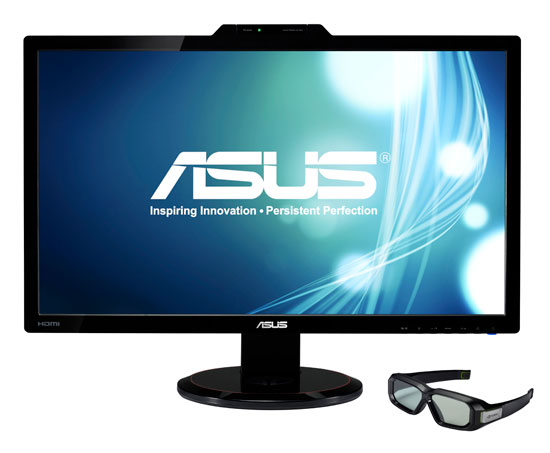
| ASUS VG278H Product Specifications | |||||
|---|---|---|---|---|---|
|
Display size |
27″, 16:9 Widescreen, LED backlight |
||||
|
Panel Technology |
TN (Twisted Nematic) |
||||
|
Resolution |
19201080 @ 120Hz |
||||
|
Contrast ratio |
1000:1 / 50,000,000:1 (Dynamic) |
||||
|
Brightness |
400 cd/m2 |
||||
|
Response Time |
2ms (gray-to-gray) |
||||
|
Internal speakers |
3W x2 Stereo |
||||
|
Connections |
HDMI, DVI-D (Dual-Link), D-Sub, HDMI 1.4, Earphone Jack |
||||
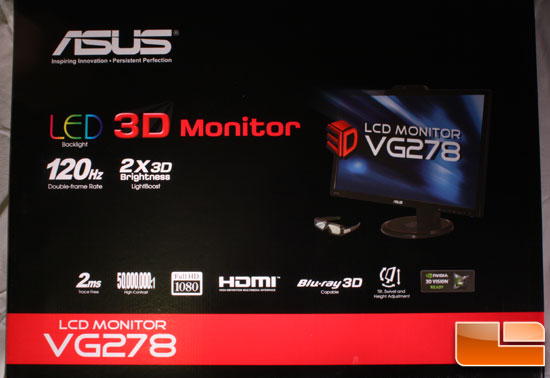
The ASUS VG278H is a 120Hz LED-backlit LCD monitor that is required for superb stereoscopic 3D gaming. For those not familiar with LED backlighting on LCD displays, it allows for thinner, brighter panels with better contrast levels while using less power. A 120Hz display is required for stereoscopic 3D gaming as it provides 60Hz per eye when in 3D mode. In non-3D mode, a 120Hz monitor is beneficial for gaming as it allows for a smoother display and helps substantially reduce ghosting.
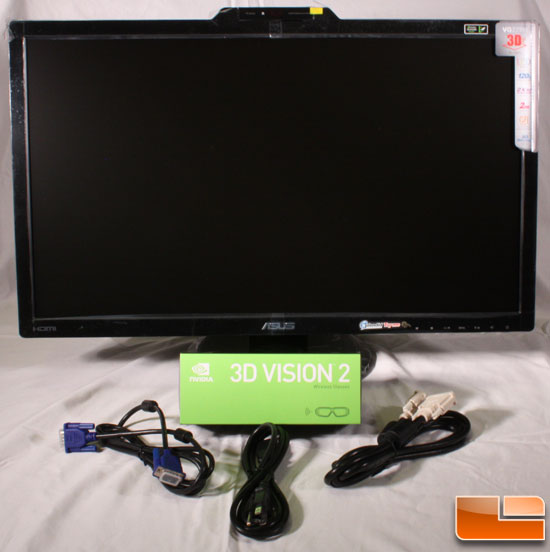
The ASUS VG278H bundle comes with the stand, DVI and VGA cables, 3.5mm audio cable, power cable and of course the NVIDIA 3D Vision 2 wireless glasses.
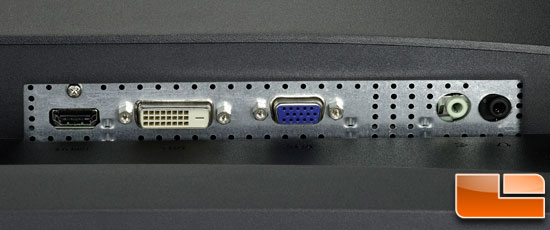
With an HDMI, DVI and VGA input this monitor has most of the connections one could ever need. There is also an audio input for the built in speakers and an audio out for a pair of headphones. While the speakers are a nice touch in a pinch, I doubt anyone will be using these regularly. They are lacking any bass and are fairly tinny sounding. About the only use I can see for them is showing everyone a video at a LAN party where you dont have other speakers. The headphone out is a nice touch, however with the placement of it on the rear with all the other connectors I also do not see it getting much use. With no ability on the monitor to disable the headphones and toggle easily back and forth from the built in speakers, having to fumble around behind the monitor is a tough sell. We have spoken to ASUS on this issue and found out that they are already looking into having this changed on future revisions.

Update: After further troubleshooting and testing it appears we only had a bad DVI cable. Upon replacing the cable and running some further tests this monitor looks great for most tasks. Colors are a bit over-saturated for graphic editing (not the intended purpose of this screen), though a combination of settings changes on the monitor and in the NVIDIA Control Panel does alleviate most of this issue. Colors are excellent in stereoscopic 3D mode, LightBoost and the new glasses improving the experience quite a bit.
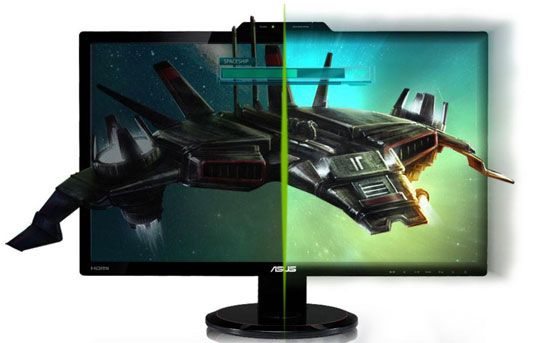
NVIDIA 3D LightBoost is a welcomed new feature on this monitor. Essentially what this technology does is it pulses the LED backlight on the monitor twice as bright as normal in unison with the flicker of the lenses in the 3D Vision 2 glasses. Because of this pulsing of light, the lenses are able to stay open for a longer period of time allowing for more surrounding light in. This means that when in 3D mode you are able to see your surroundings better as the glasses do not appear as dark. There is also a manual control for the pulsing feature that is only available in 3D mode where you can adjust the LightBoost brightness. This is a nice feature as it allows you the ability to adjust the brightness based on the room you are in. The LightBoost brightness is independent of the standard brightness controls for added fine-tuning.

Comments are closed.